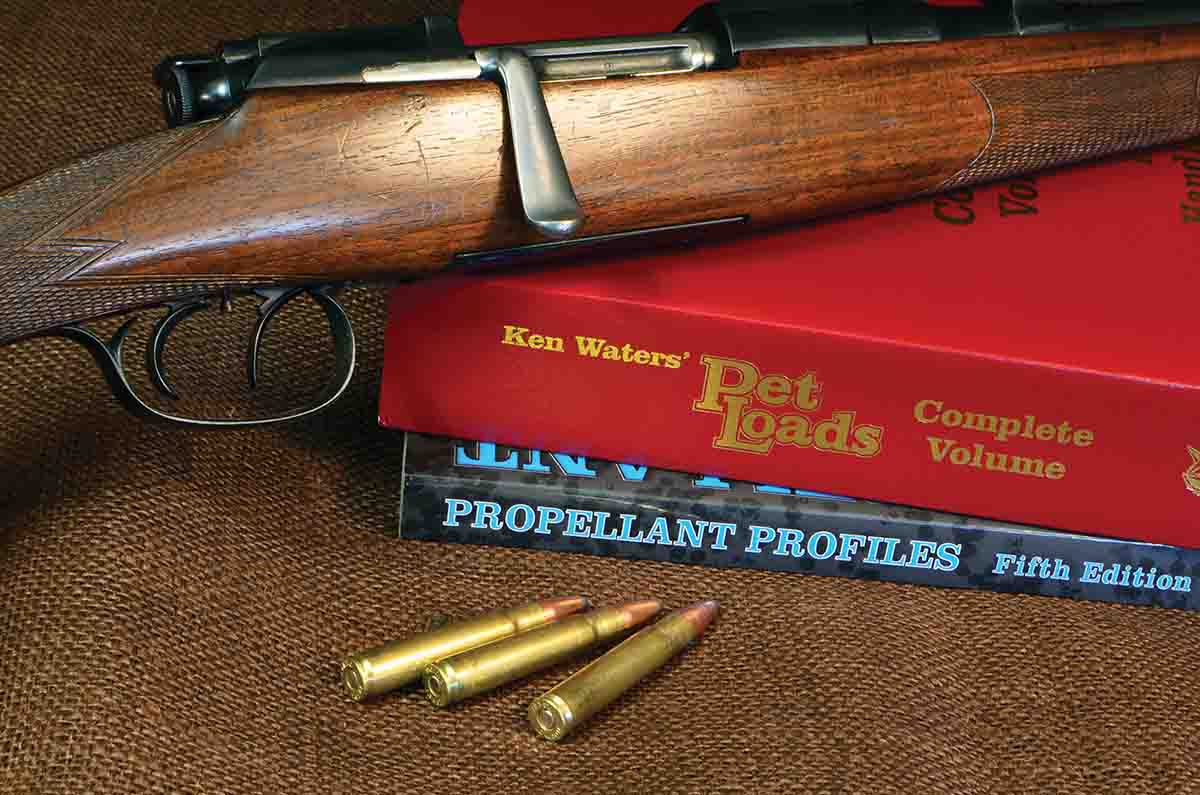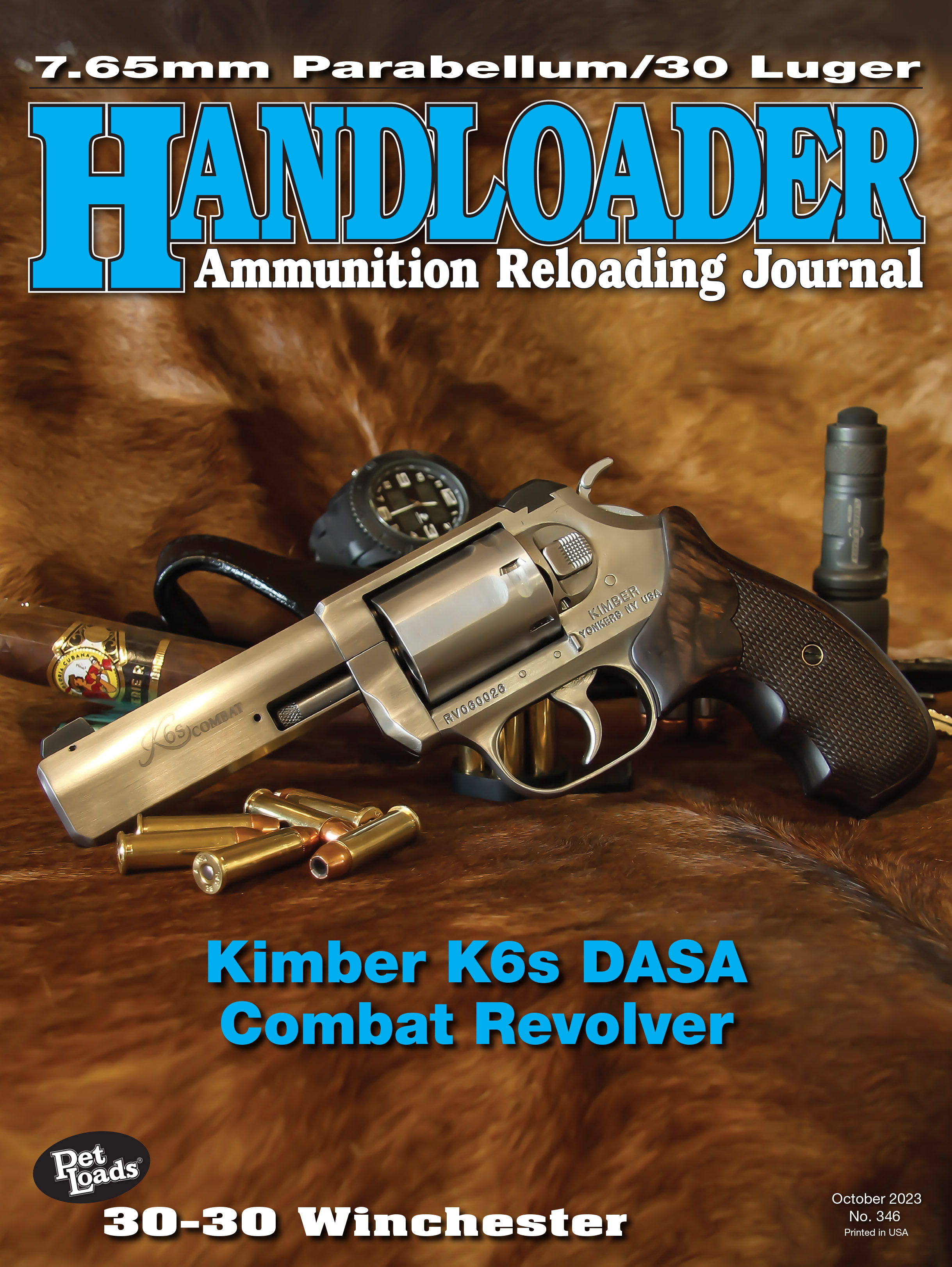In Range
The Information Byways
column By: Terry Wieland | October, 23

Hodgdon introduced the Enduron powders in 2015 as part of the IMR line. Their advertised, desirable characteristics were that they were temperature-stable, meaning changes in temperature did not affect their burning rate and they reduced or discouraged cuprous fouling. As with several other IMR stalwarts, such as 4064, the Enduron line is manufactured in Canada.
At the height of the COVID-19 component shortage, the Endurons, among others, became listed as “out of stock” and rumors soon circulated that they had been discontinued. This situation has persisted for a couple of years now, yet inquiries to Hodgdon always come back with the same reply: “Out of stock, not discontinued.”
The reason I mention all this is that the Enduron powders, during their brief appearance, managed to inspire some serious loyalty. A couple of other friends developed extremely good loads – high, consistent velocities and wonderful accuracy – using 4451, the Enduron counterpart to 4350. Then they ran out. Now what?
This highlights one of the problems of the situation in which we now find ourselves, with more powders, from more different sources, than we’ve ever had, but with sometimes uncertain supplies. This can be due to supply chain problems, or changing regulations in foreign countries.
Unfortunately, smokeless powder is not like diesel fuel, or different grades of gasoline. To use it effectively, you need data, formulas and loading tables. When a new powder is introduced, the manufacturer or importer has to provide data to go with it. This is not easy to come by, since to develop data properly, you need a ballistics laboratory, skilled technicians and a pressure barrel for every cartridge.
The dilemma takes various forms. A new cartridge might lack data for older powders, while a new powder is unlikely to be tested with any but the most popular of the older cartridges. You will always find data for a 308 Winchester with any remotely suitable powder, but the 35 Remington, or 250-3000? Unlikely.
This is one good reason to keep old loading manuals – in fact, the older the better, if you like vintage rifles. They are one of my prime sources of information on older loads, but there are others. Early editions of Handloader’s Digest, which were published in the 1960s by Gun Digest, and edited by John T. Amber, are invaluable in many ways. Later, some handloading books in the same format were edited by Dean Grennell, a noted authority. Grennell always emphasized handgun loads, which is a mixed blessing.
For those who do not have a copy, Ken Waters massive compendium of his “Pet Loads” columns belongs on every handloader’s shelf. Waters is my nominee for the preeminent handloading writer of the latter twentieth century. Most of his work appeared in Handloader, although he made notable contributions to Gun Digest (the annual, not the monthly) over the course of almost 50 years.
Pet Loads (the book) was produced by Wolfe Publishing and appeared in various forms with the final “Complete Volume,” dated 2021, totaling 1,176 pages. It is currently available from WolfeOutdoorSports.com for $60 and whatever the shipping charges are for your region or country.
The “Pet Loads” series began with the very first issue of The Handloader Magazine (as it then was, in the spring of 1966) as a way of highlighting favorite formulas of prominent outdoor writers. For example, Jack O’Connor shared his loads for the 270 Winchester – generally considered to be his favorite cartridge – but that approach ran out of steam fairly quickly. After eight issues, the feature was expanded to include loads favored by the Author, Ken Waters.
In 1966, Waters was already a widely experienced and highly-respected writer on rifles and handloading, and the articles that accompanied the loads are, in many ways, more valuable than the lists of loads themselves. Waters lived through, and witnessed, the evolution of such cartridges as the 270 Winchester, 220 Swift, and 22-250 Remington. In many ways, recollections based on firsthand knowledge are more valuable that what a later writer can put together based on research.
Anyway, Waters included all of that and more in his “Pet Loads” articles. When I acquire a new (old) rifle and want to learn as much about it as I can, the first place I look is Ken Waters, and I always feel vaguely cheated if he never owned and wrote about either the rifle or the cartridge.
While we’re on the subject, another Wolfe publication everyone should have is Propellant Profiles. Again, this is an anthology of our powder columns over the years, and has been published in several editions as more columns appear. The columns themselves have been updated over the years. For example, H-4198, one of our all-time best powders for many applications, was covered four times, by Layne Simpson, Bob Hagel, John F. Jerold and R.H. VanDenburg.
This came about partly because, like many powders that began as government surplus post-World War II, later production was carried on for Hodgdon by different manufacturers and each new iteration deserved a look. As well, it was an opportunity to marry an older powder to some newer cartridges. I am currently using the fifth edition, which came out in 2009. A later one, the sixth, was published in 2016. Now out of print, asking prices for it vary online.
By the way, Ken Waters did much the same thing with cartridges, revisiting them once or twice in later years as components changed or new rifles came out. The 45-70 Government was covered three times, in a two-part article in 1974, and another in 1996. The latter came about because in that year, Marlin released a new, stronger rifle to handle it, and new testing was required to see what it would do.
This brings up another important point and that is that not everything can be taken at face value. Things change, including powders, primers, bullets and even cases. Jack O’Connor’s favorite loads for the 270 Winchester include a couple that exceeds anything listed in a modern loading manual, and one I tried could not even be stuffed into the case.
What was going on? Well, it turns out that Winchester-Western 270 cases from the 1960s have significantly greater capacity than some later ones.
This fiddling with wall thicknesses and case capacities does not occur often, but it does occur. A safe load in one case of generous capacity, tried in another case of less capacity, can result in pressures that can be damaging if not outright dangerous. This happened around 1950 with the 22 Hornet; it occurred in the 1980s with the 7x61mm Sharpe & Hart, when Norma tried to massage it into the 7x61mm Super. In the first example, the Hornet case was made stouter, reducing capacity, while in the latter, the 7x61mm case actually had its wall thickness reduced. The original design, by Philip Sharpe, had erred on the side of caution so much that the case was stronger than need be, at the expense of capacity.
Surprisingly, such changes are not widely announced and even if they were there’s no guarantee every handloader will get the message.
This is the reason when I start working with a new (to me) cartridge, I read everything about it I can get my hands on, I compare recommended loads from back then with what is listed now, and I start low – really low – and work up. Just because something appears in print does not make it gospel, and what was perfectly good in 1950, may not be okay now.
A good rule is to check, double-check and triple-check. When it comes to handloading, there is no such thing as too much information.


